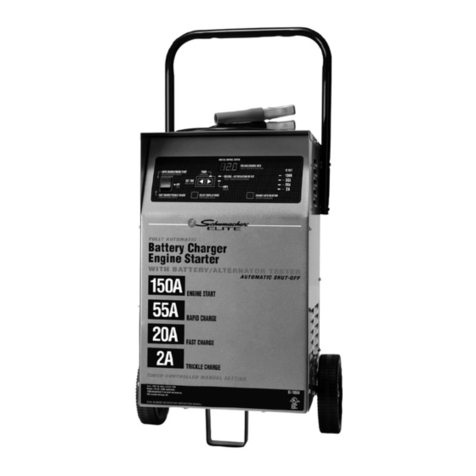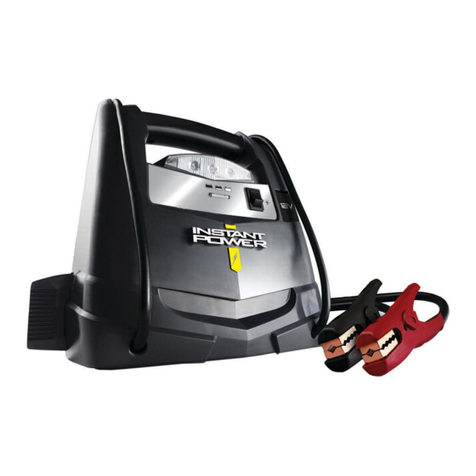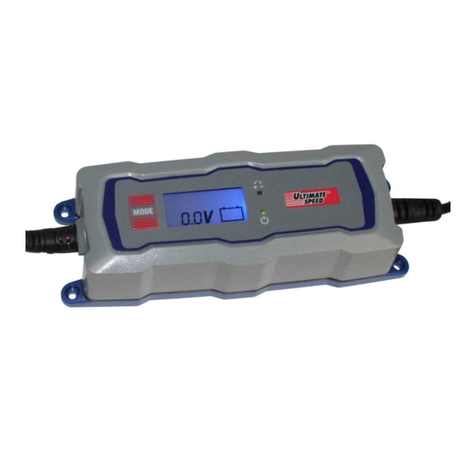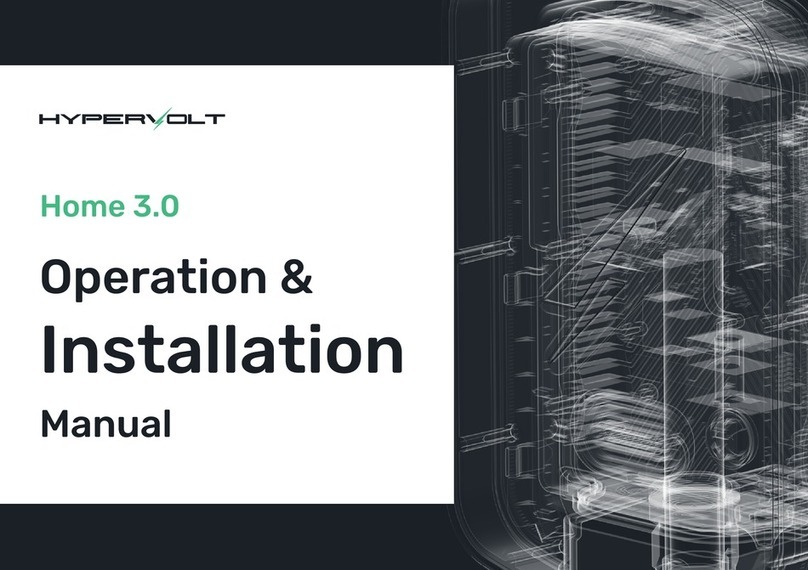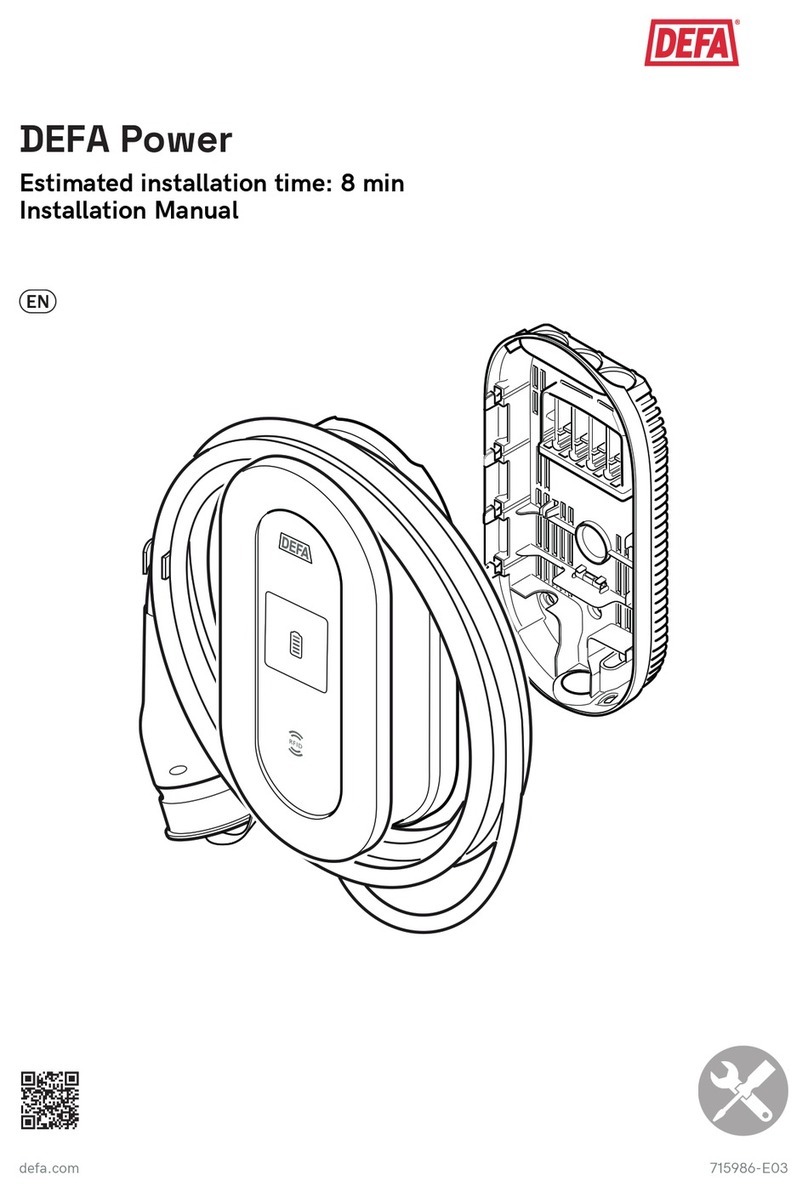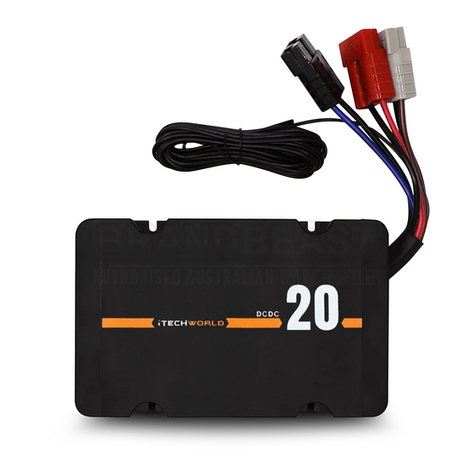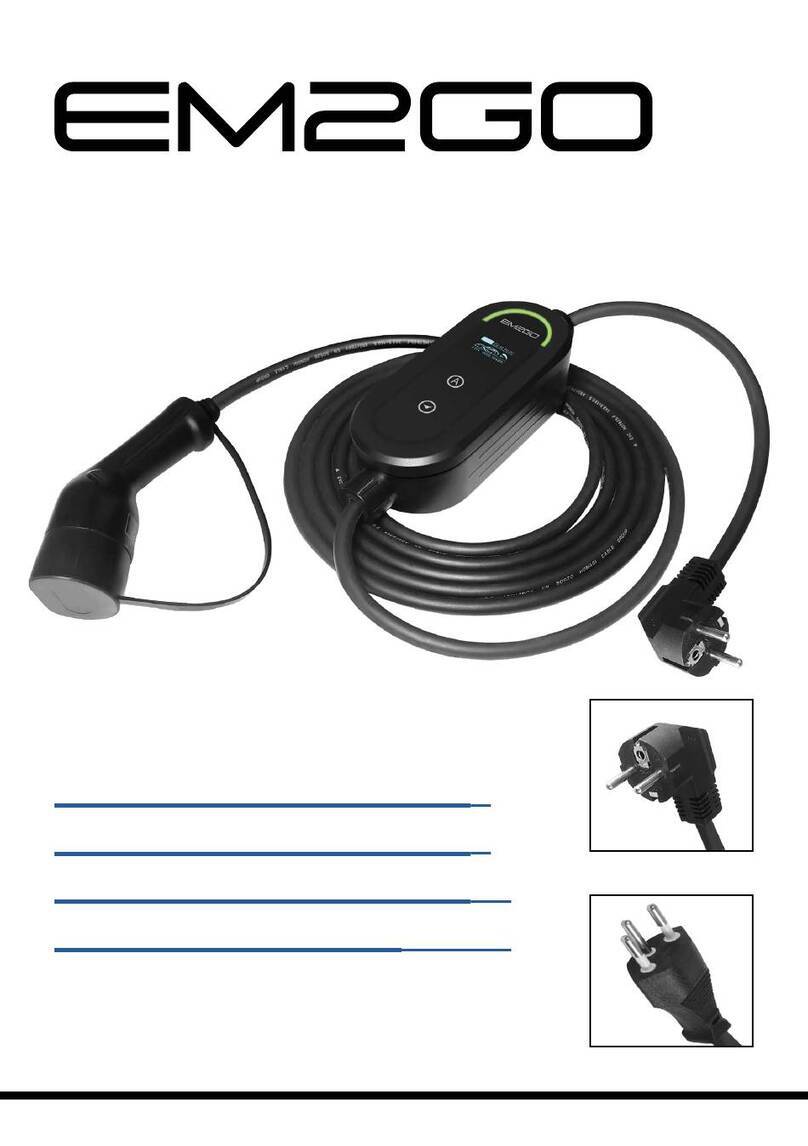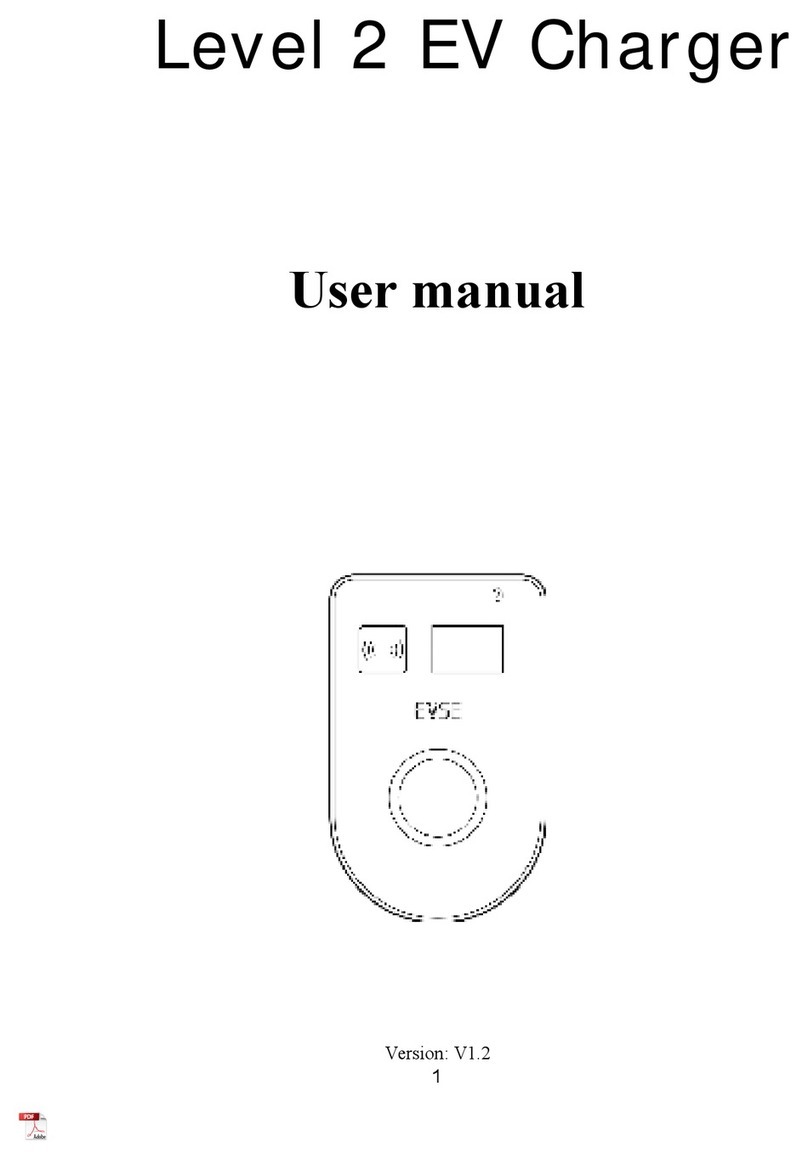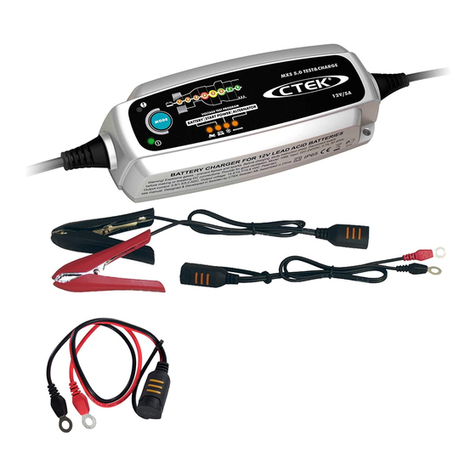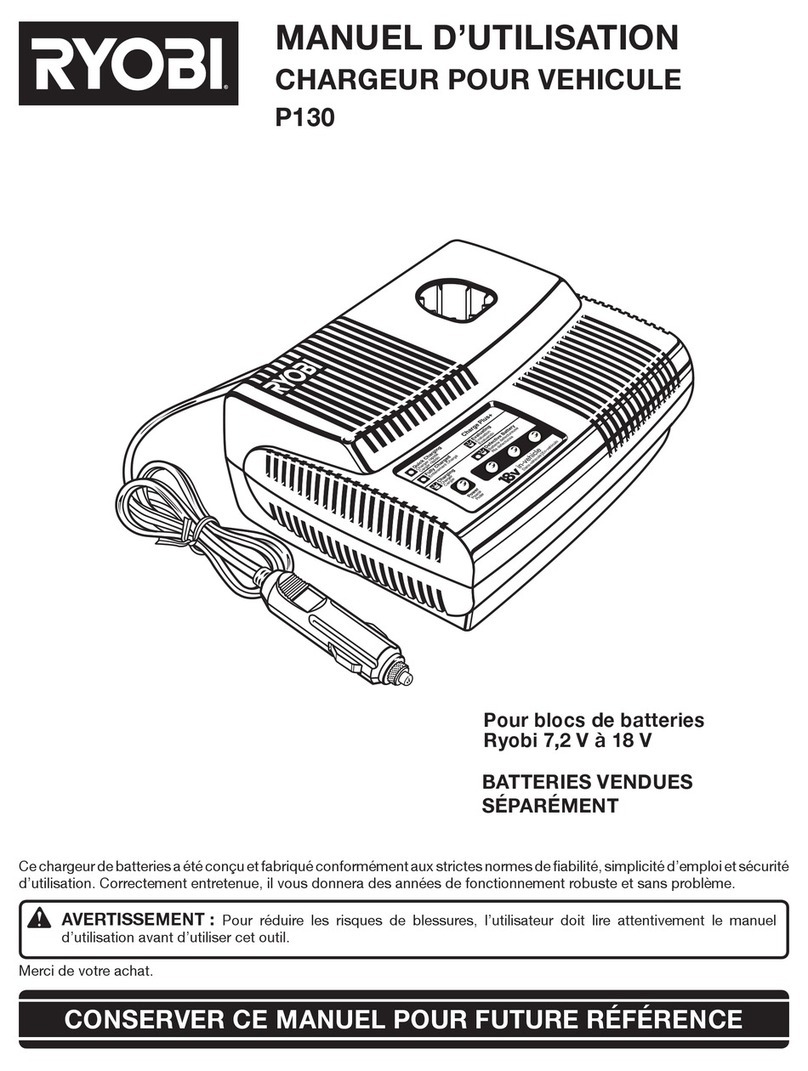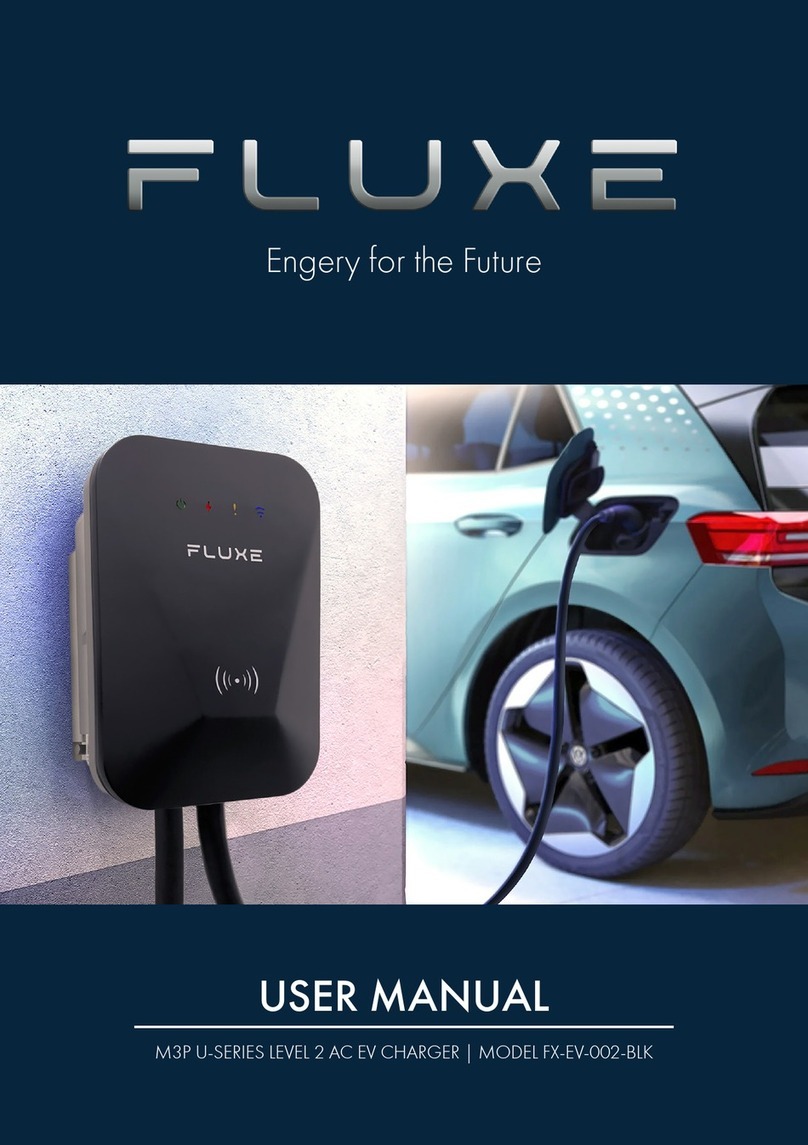
8
Engine Starting Notes
During the starting sequence listed above, the charger is set to one of three states:
Wait for cranking –The charger waits until the engine is actually being cranked before
delivering the amps for engine start and will reset if the engine is not cranked within 15
minutes. (If the charger resets, it sets itself to the default start up settings). While waiting
for cranking, the digital display shows UG\.
Cranking –When cranking is detected, the charger will automatically deliver up to its
maximum output as required by the starting system for up to 3 seconds or until the engine
cranking stops. The digital display shows a countdown of the remaining crank time.
Cool Down –After cranking, the charger enters a mandatory 3 minute (180 second)
cool down state. The digital display indicates the remaining cool down time in seconds.
It starts at 180 and counts down to 0. After 3 minutes, the digital display will change from
displaying the countdown to displaying UG\. The CHARGING LED will then be lit.
Using the Battery Voltage Tester
1. With the charger unplugged from the AC outlet, connect the charger to the battery
following the instructions given in sections 6 and 7.
2. Plug the charger AC power cord into the AC outlet, following the instructions given in
section 8.
3. If necessary, press the BATTERY TYPE button until the correct type is indicated.
4. Read the voltage on the digital display.
NOTE: After 10 minutes, the charger will automatically switch from tester to charger.
Tester and Charger::KHQ¿UVWWXUQHGRQWKHXQLWRSHUDWHVRQO\DVDWHVWHUQRWDVD
charger. Selecting a charge rate activates the battery charger and deactivates the tester.
Pressing the CHARGE RATE button when the ENGINE START LED is lit (except during
the 180 second cool down) will shut off the charger and activate the tester.
Power-Up Idle Time Limit: If no button is pressed within 10 minutes after the battery
FKDUJHULV¿UVWSRZHUHGXSWKHFKDUJHUZLOODXWRPDWLFDOO\VZLWFKIURPWHVWHUWRFKDUJHULID
battery is connected. In that case, the charger will be set to the start up default settings.
Testing After Charging: After the unit has been changed from tester to charger (by
selecting a charge rate), it remains a charger. To change the battery charger back to a
tester, press the CHARGE RATE button until all charge rate LEDs are off.
NOTE: The battery tester is only designed to test batteries. Testing a device with a
rapidly changing voltage could yield unexpected or inaccurate results.
Using the Alternator Performance Tester
1. With the charger unplugged from the AC outlet, connect the charger to the battery
following the instructions given in Sections 6 and 7.
2. Plug the charger AC power cord into the AC outlet, following the instructions given in
section 8.
3. Start the vehicle, and turn on the vehicle’s headlights. Read the voltage on the digital
display. If you get a reading between 13.4 volts and 14.6 volts, the alternator is
working properly. If the reading is less than 13.4 volts or more than 14.6 volts, have
WKHFKDUJLQJV\VWHPFKHFNHGE\DTXDOL¿HGWHFKQLFLDQ
Fan:7KHFKDUJHULVGHVLJQHGWRFRQWUROLWVFRROLQJIDQIRUHI¿FLHQWRSHUDWLRQ,WLVQRUPDO
for the fan to start and stop when maintaining a fully charged battery. Keep the area
QHDUWKHFKDUJHUIUHHRIREVWUXFWLRQVWRDOORZWKHIDQWRRSHUDWHHI¿FLHQWO\
10. MAINTENANCE INSTRUCTIONS
10.1 After use and before performing maintenance, unplug and disconnect the battery
charger (see sections 5, 6 and 7).
10.2 Use a dry cloth to wipe all battery corrosion and other dirt or oil from the battery clips,
cords and the charger case.
10.3 Ensure that all of the charger components are in place and in good working condition,
for example, the plastic boots on the battery clips.
10.4 Servicing does not require opening the unit, as there are no user-serviceable parts.
10.5 $OORWKHUVHUYLFLQJVKRXOGEHSHUIRUPHGE\TXDOL¿HGVHUYLFHSHUVRQQHO



